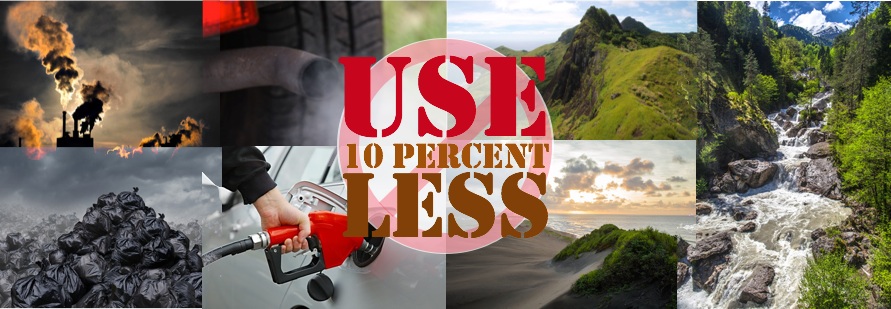The background behind Use 10 Percent Less
Last updated 1st January, 2020
Our world is under immediate, serious threat from human pollution and human destruction of natural habitats. We have to act immediately, and that’s not an over exaggeration. But what can we do? How can we act immediately in a way that will have a meaningful impact?

That will have a very meaningful effect. And, as soon as you’ve achieved using 10 percent less, start using 10 percent less again.
Every time you start your car, take a flight, turn up the heating in the house or put on the A/C, eat food (especially animal based foods and foods flown in on a plane), use your smartphone, download a movie, buy new clothes and almost everything you consider normal, you’re contributing to human pollution and human destruction of the natural environment. It’s not somebody else – it’s all of us. We are a group of individuals and each of us has a responsibility to turn the tide by starting to use less right now.
Let me explain why this is a human problem and why we have the power at our fingertips to correct it.
We’re using more and more energy
As you can see from this graph, the world is using 15 times more energy today than it did in 1900, and about 30 times more energy that it did in 1800. It clearly has been an exponential increase in energy usage, and you can see that we started to burn coal, and then oil and gas, to make this exponential increase happen.
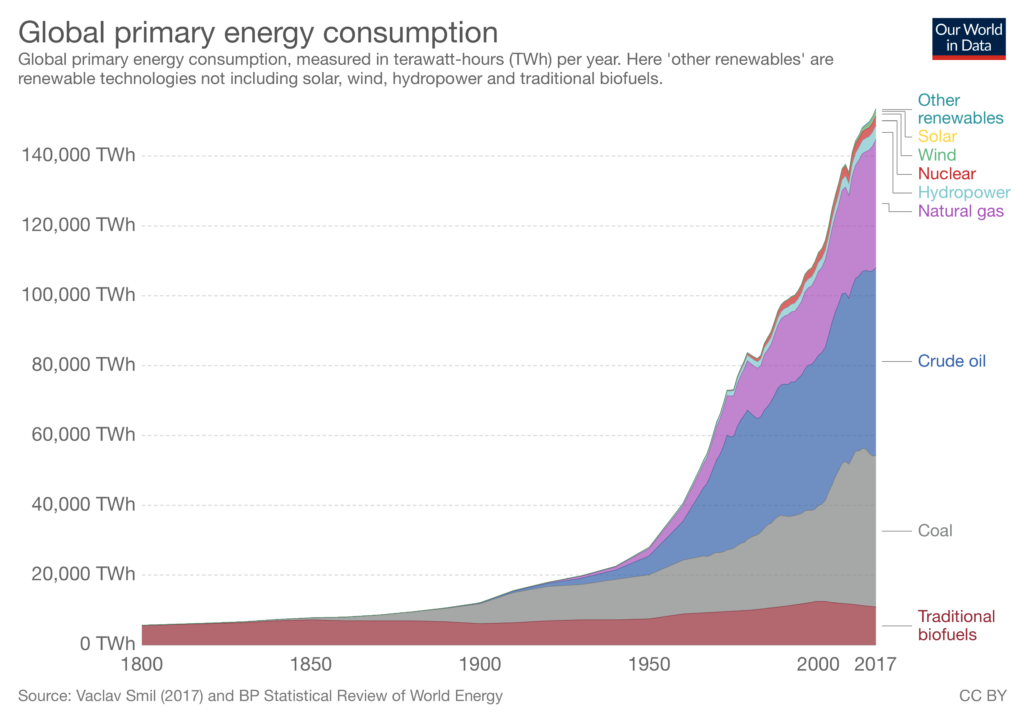
Many people will start to say that it’s all because of population growth, but that’s not the case, as we’ll see next.
We can’t blame population growth
This graph of world population growth shows that the population has grown about 4.4 times since 1900, and about 7.5 times since 1820. Sure, it’s an exponential growth as well, but it doesn’t keep pace with the exponential growth of total energy usage.
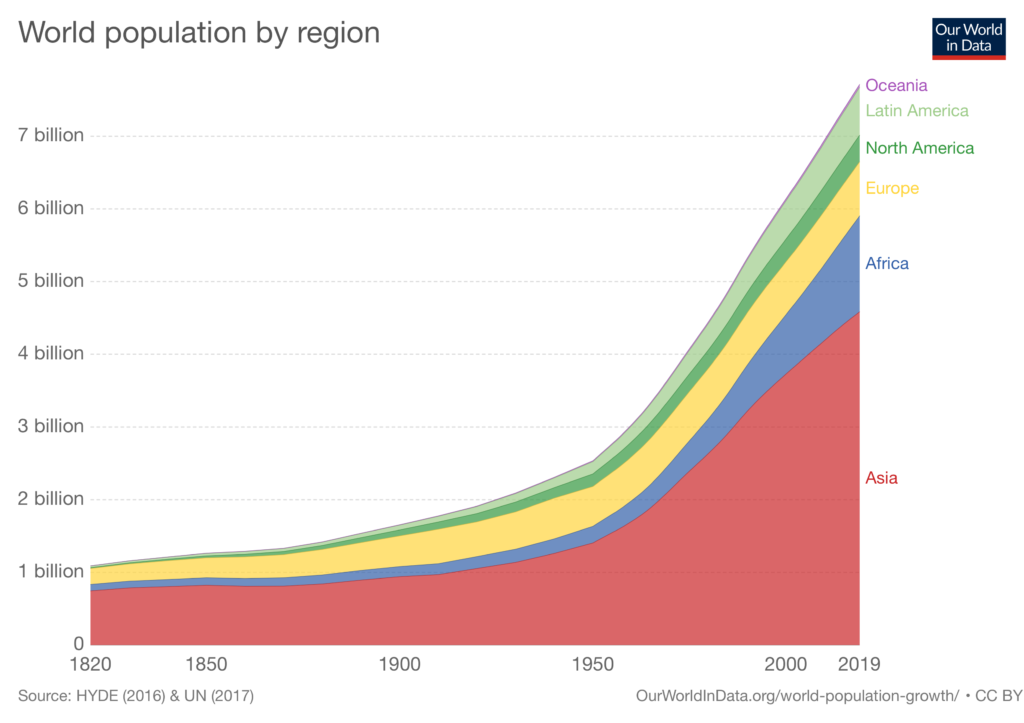
In the image below, I’ve overlain the two graphs (energy usage and population growth) at approximately the same scales. This shows that energy usage has increased approximately 4 times faster than population growth in the last 100 years or so.
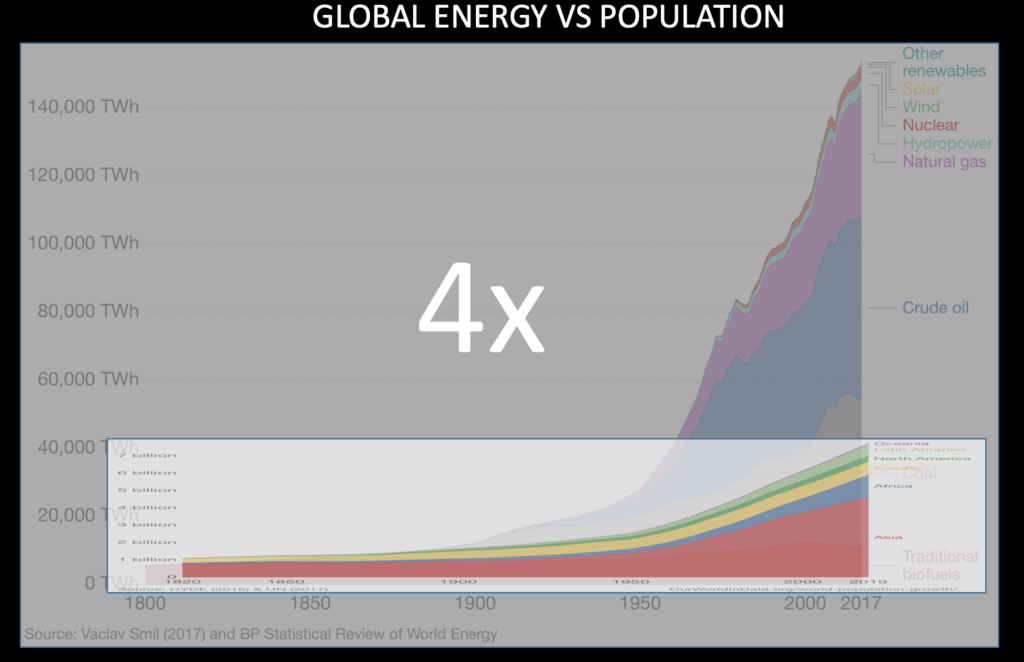
So, there’s no doubt that human population of the Earth is using about 4 times more energy (on average, per person) than it was a hundred years ago. This has happened all of a sudden because of the industrial revolutions we’ve had in recent times.
Based on information in the Wikipedia page on the industrial revolution, the first industrial revolution started in about 1760 and lasted until about 1820 or 1840. This first revolution was brought about by the invention of steam powered machines and of course, the burning of coal. Then the Wikipedia page makes this comment;
“Rapid economic growth began to occur after 1870, springing from a new group of innovations in what has been called the Second Industrial Revolution. These new innovations included new steel making processes, mass-production, assembly lines, electrical grid systems, the large-scale manufacture of machine tools and the use of increasingly advanced machinery in steam-powered factories.”
So the really rapid growth in energy usage should start about 1870, and that’s exactly what we can see in the energy usage graph above (notice where the rapid rise in coal usage occurs on that graph in the mid to late 1800’s).
Ok, so since the industrial revolution we’ve begun burning coal, and then coal plus oil, and then coal plus oil plus gas, to fuel our thirst for energy. Does this have any impact on the world overall? Let’s have a look.
The CO2 in the atmosphere is rising at an alarming rate
There is zero doubt that the amount of CO2 in our atmosphere is rising exponentially as well. This graph from Scripps shows an exponential increase that pretty much matches the details of the industrial revolution and our use of coal, oil and gas to fuel our thirst for energy.
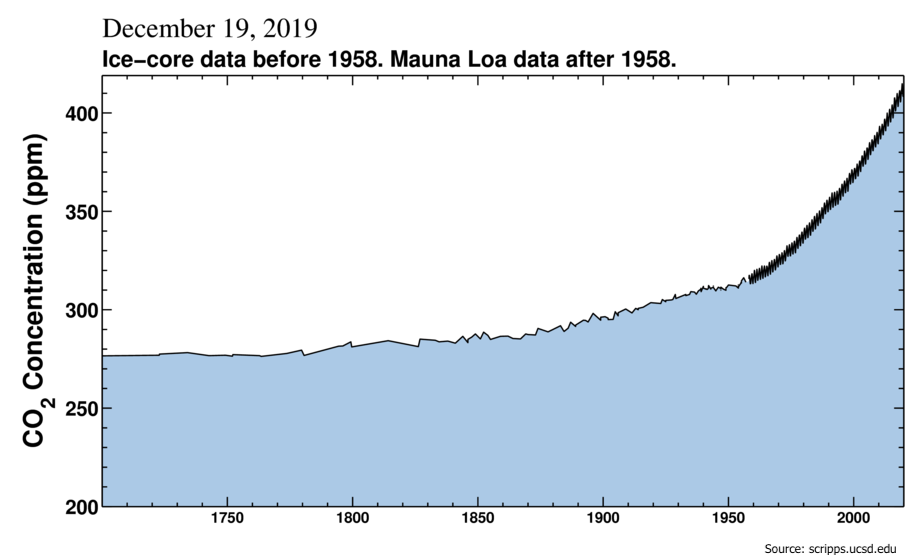
One interesting thing is that CO2 concentration has never been above 300 ppm (parts per million, a way to measure concentration) in the last 800,000 years! Now it has risen rapidly to above 415 and the increase matches our exponential increase in energy use. It would be very hard to argue that burning coal, oil and gas is not the reason why this CO2 concentration has increased like it has.
Humans have had a clearly measurable (and miserable!) effect on the Earth.
We have to admit and accept this right now. Our burning of coal, oil and gas has caused the concentration of CO2 in the atmosphere to go up 60% in a couple of hundred years. We’re polluting the atmosphere rapidly and we have to stop it.
And our desire for meat ramps way up
Another thing that has been increasing exponentially is our desire for meat. With the industrial revolution we suddenly had the capacity to keep food refrigerated, and even frozen, and we were able to ship it all over the world. Meat is now a global commodity that individuals can profit from, and our desire to eat it has somehow gone up as well. This graph shows that in 2013 we’re eating more than 12 times the chicken, and almost 4.5 times more meat overall, than we were eating than in 1961. During this time, the world population only increased about 2.7 times.
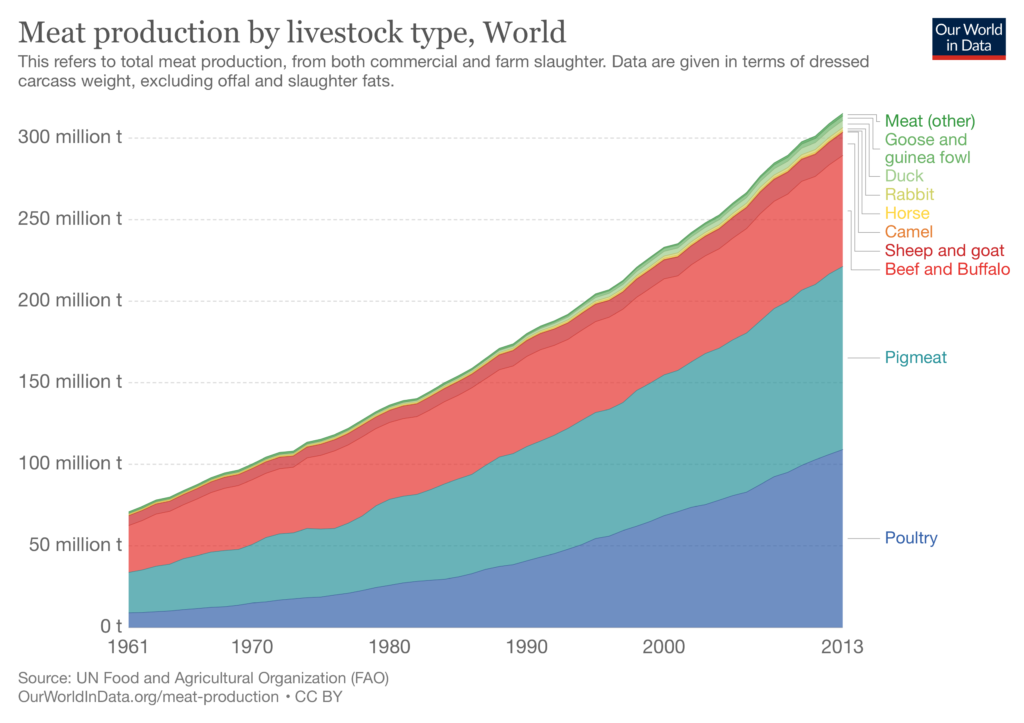
We’re eating more meat (per capita) than we ever have and the amount is still going up rapidly. Meat prices are now tracked on markets just like other commodities of coal, oil, gas, etc.
What makes this worse is that meat production uses up more of the world’s habitable land per calorie than other forms of food. This graph demonstrates the problem well;
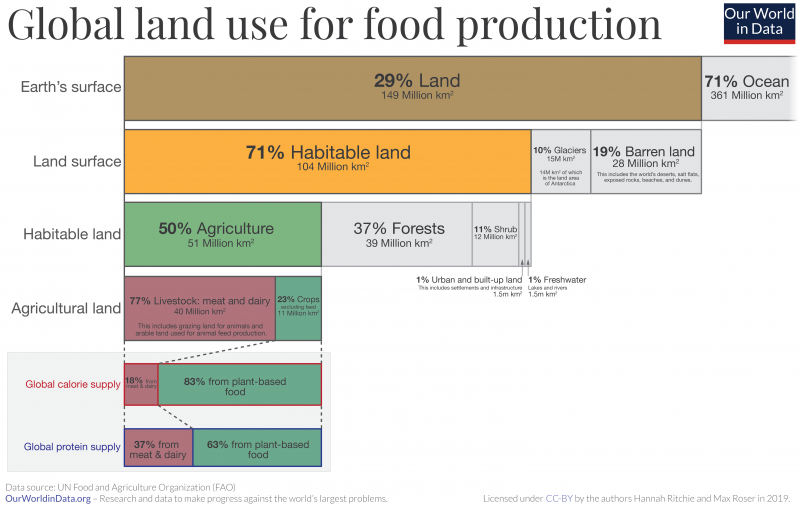
So in 2019, 77% of the land used for agriculture is used for livestock but that only produces 18% of the global calories and 37% of global protein. This doesn’t seem like a sensible thing for us to be doing. It’s not sensible, but it must be a profitable thing to do because it’s so widespread.
This is the fundamental problem that we have today, the drive for profits. The industrial revolution allowed individuals to use machines and factories to create vast amounts and then ship them to markets all over the world. Farming meat is more profitable than farming crops, that’s why 77% of our agricultural land is taken up by animal farming. There’s no other reason really.
The value of global exports
This graph of the value of global exports is very enlightening. Since 1913, the value of global exports has risen exponentially and, in 2014, was about 50 times higher. That’s crazy.
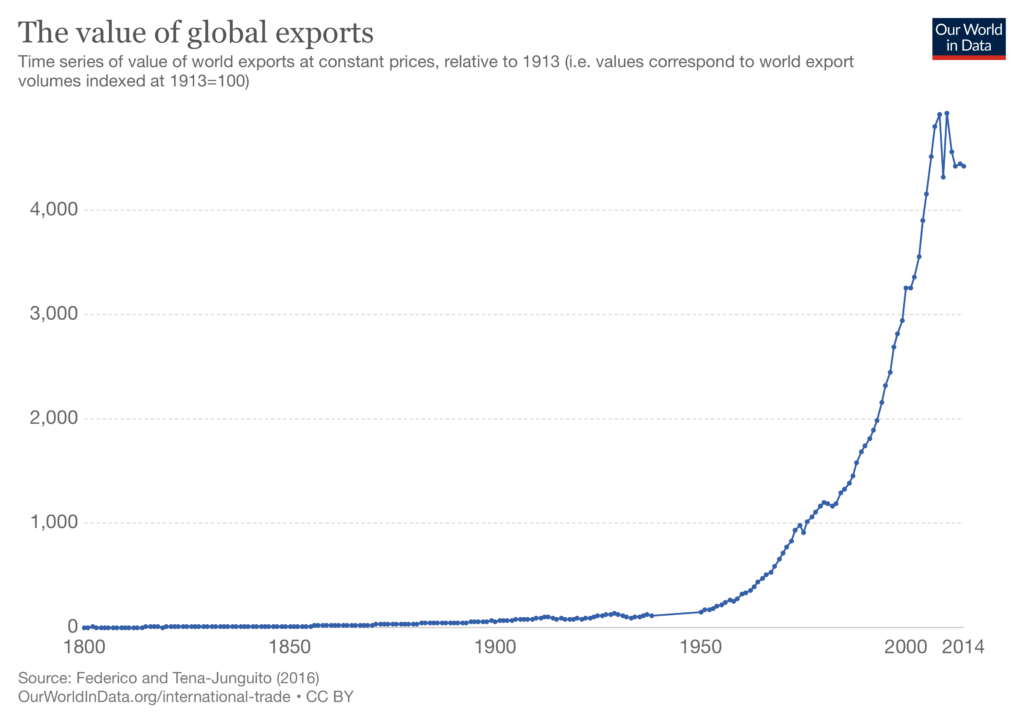
Why has global exporting gone up so much? Because it’s profitable. People have learnt that the best way to make profits (in terms of money) is exploitation – exploit the land, animals or the people in places where it can be done cheaply, transport it around the world and sell it to the people who will pay the most for it. That’s it. That’s the formula for how the world works today. It works for coal, oil, gas, chicken, beef, gold, grains, uranium, steel, copper, sugar, fabric, nuts, clothing, and almost everything else.
The reason we’re still on an exponential usage of everything curve is because people are still finding new ways to apply this exploitation model to the world and to make huge profits from it. Now the real race is between fellow exploiters to see who can exploit the best and take more profits from other exploiters. Unfortunately, different methods of exploitation are now called markets, and people and companies are finding or creating new “markets” and these sound like things of merit (but mostly they’re just new ways to exploit).
The new markets are tech based but oil is still strong
Over all of history, the biggest companies used to be massive trading companies like the Dutch East India Company, then the mantle moved to Oil & Gas companies and now the technology giants are coming. This graph shows the relative maximum value of the largest global companies in adjusted, comparable dollars (for the companies still in operation, this calculation was done in 2012).
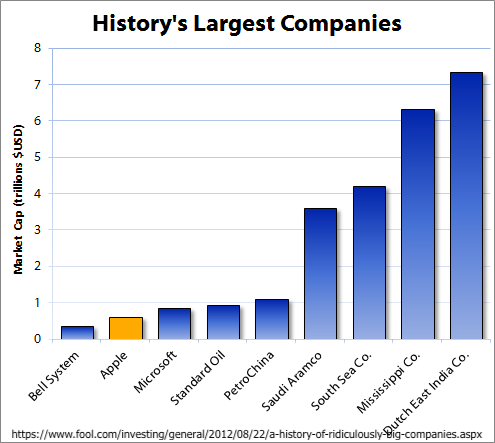
Since 2001, there’s been a big shift towards the tech giants. Now the top 5 publicly traded companies are all tech companies.
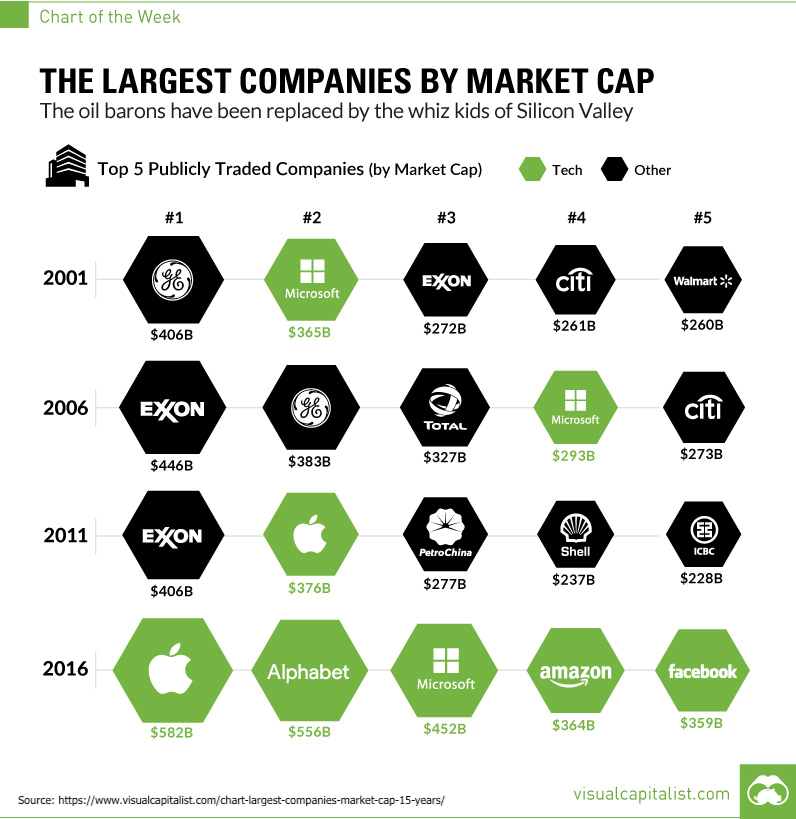
Exxon is the only energy company that makes it into the top 10 in 2018, and that was in 9th place. They were number one in 2008, so there’s been a huge shift in the power to create profits.
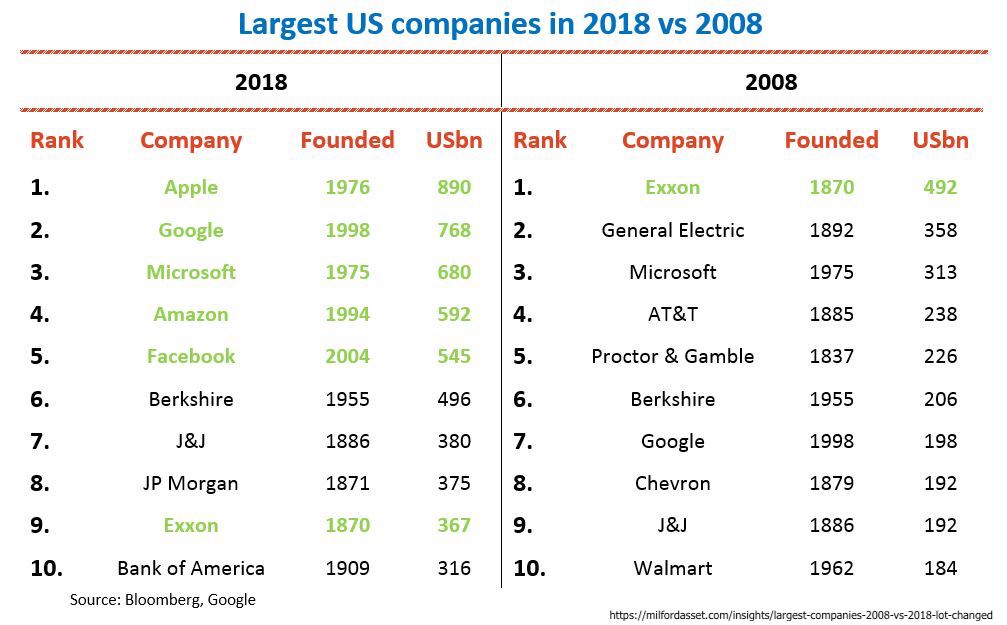
Wealth is moving more and more to the wealthy
Between 1980 and 2014, there has been a huge adjustment so that lower income people get less of the wealth and richer people get more and more.
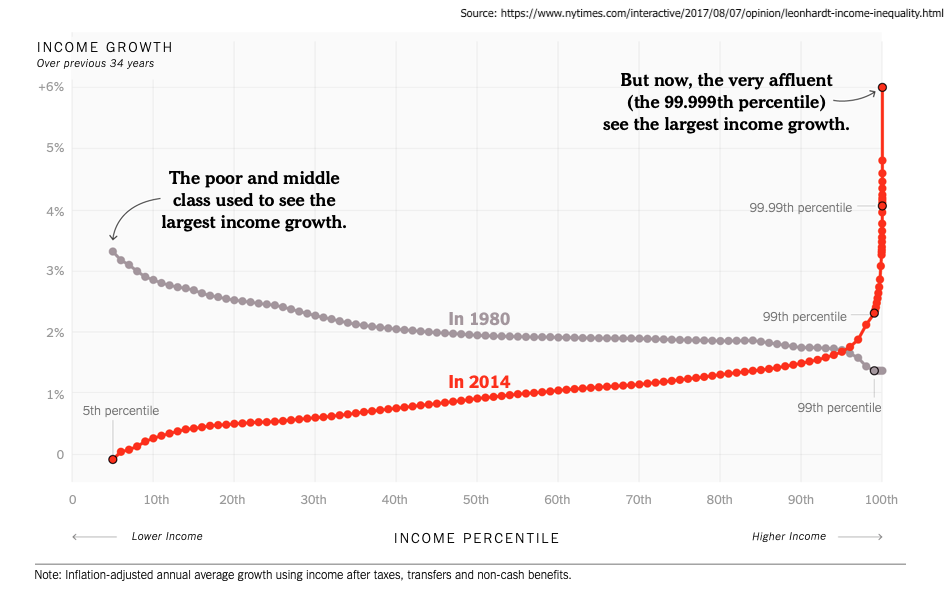
This is shown very well by this animated graphic. Here it’s easy to see how more and more of the wealth is being pushed towards the right-hand side, to the wealthiest people, as time goes by.
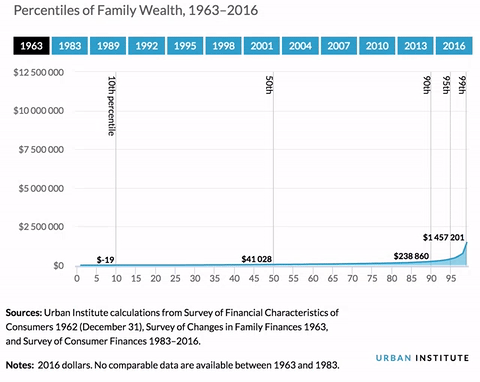
And the number of billionaires are booming. Interesting how this is an exponential growth curve as well. In the 26 years between 1987 and 2013, there has been a 10 times increase in the number of billionaires and an 18 times increase in their total wealth. Hmm.
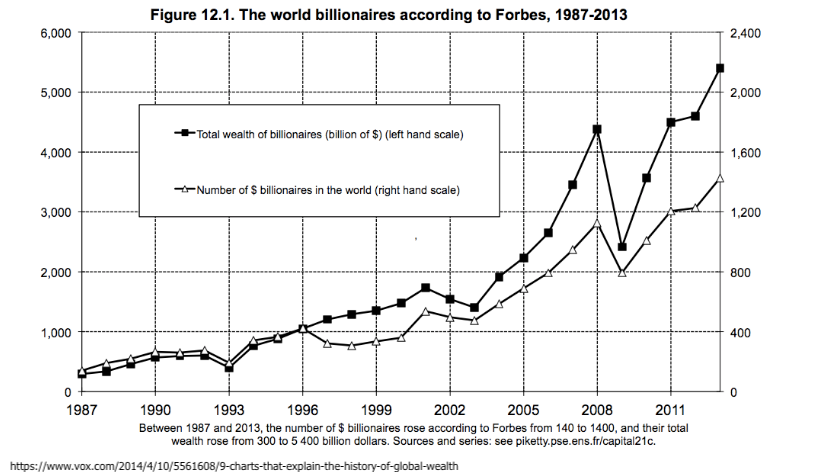
There are other huge markets and industries that are growing and profiting as well that I’m not covering here – things like pharmaceuticals, agribusiness, entertainment (including professional sport), processed foods, fashion and many more. All of the wealth movement is not happening just because of the tech giants, it’s just that they’re now the big players.
What do the tech giants need to keep this going?
- Computers (taking up natural resources in terms of precious metals and scarce elements)
- Cheap energy to run these computers and cool them
- People to write software and applications
- Planned obsolescence
- Advertising
Regarding the need for natural resources to make computer equipment, most of us are not aware of the race to get access to mines, and these resources, that the tech giants are participating in (one company – Fairphone – is bucking the trend and doing much better). Without going into this in much detail, here are a few headlines that show that the business of the tech giants is surely an exploitation business on a grand scale;
- Top tech firms sued over DR Congo cobalt mining deaths – from the BBC
- Tech firms to check suppliers after mining revelations in Tanzania – from The Guardian
- Tech companies sued over child cobalt mining – a very concerning video from CBS News
One of my big concerns is advertising. In many ways, I see it as all-pervasive brainwashing that we think is perfectly fine. It’s full of misleading statements (potentially blatant lies), bright colourful images, a catchy tune or jingle, and actors paid to smile and look happy – all this to convince us (brainwash us) into buying something that we wouldn’t have normally bought (especially if we knew the truth about the product). But advertising is one of the key steps to making the wealth move towards the right, towards the wealthier people. Advertising increases the chance of the masses (the poorer people) buying things they don’t need and causing more profits to be sent towards the richer people.
This graph shows how the advertising industry is growing. It must keep growing if the exponential, exploitation, system is to keep going.
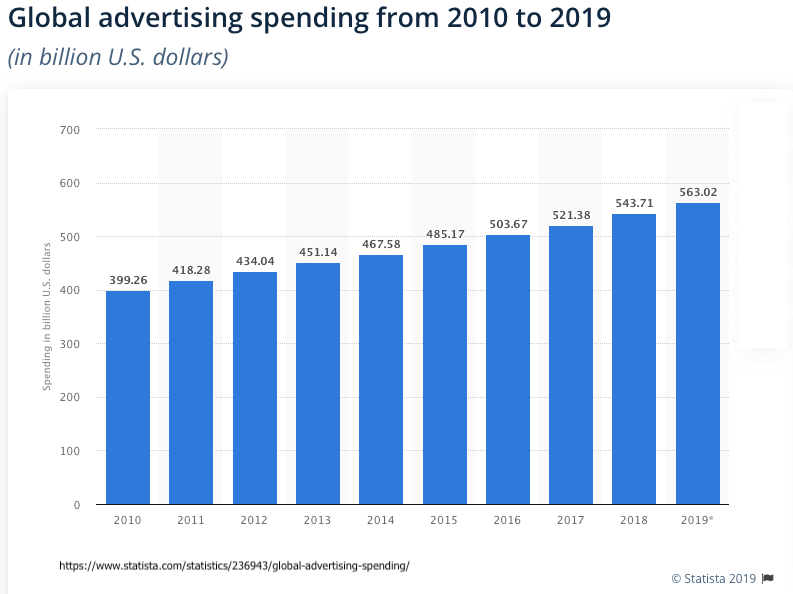
There are some interesting statistics in this article – “Global ad spend has slowed but 2020 looks set to be a bumper year” – from CNBC. Global advertising spending is set to go up 6% in 2020. Quite an increase for one year. And, for the first time, internet advertising using Google, YouTube (both owned by Alphabet) and Facebook will comprise more than 50% of the global advertising spend.
All the tech giants are getting heavily into advertising (one of the reasons they’ve been collecting all our data for so long) which is a really smart move for their profitability. Not only are they involved in one exponentially increasing exploitation market (selling technology based equipment and solutions), but the advertising they can do at the same time brings them profits from other exponentially increasing exploitation markets like fashion, pharmaceuticals, entertainment, sport, processed foods, etc. It’s a fantastic double whammy at the profit level.
Good move for them. Bad move for the world as a whole. Systems based on exploitation are unsustainable and we’re definitely seeing the negative effects now.
How do we reverse this?
The data is clear. We’re currently living in a runaway, exponentially growing, exploitation system – hopefully, all of the graphs above have demonstrated this. This runaway system is currently designed to get more of the wealth in the world to move to the wealthiest people. That seems to be the end game – people want to get as much wealth as possible with almost no other consideration.
We’ve all been hoodwinked or we’re in a mass delusion. The massive pollution and environmental destruction problem we have today is primarily caused by our greed. Some of us have got really good at moving money away from the rest of us and towards themselves.
How can we break out of this runaway system before it has exploited everything to the point there’s nothing left to exploit?
DON’T BUY!! Don’t be fooled by the advertising (which is almost everywhere!). At the very least, buy 10 percent less right now.
If everyone in the world bought 10 percent less stuff today, tomorrow, next week, this year, all of the big corporations would be shocked and worried instantly. And that’s what the system needs to stop the world from being lost. Using 10 percent less includes processed food, fuel of all types, clothing, and all those tangible things, but also intangibles like using less cloud services, avoid anything that needs to be downloaded, not paying for those subscription services you don’t need.
And guess what? You’ll have more money as a result of this. Less of your money is moving to the right and going to the rich. You won’t miss the things you don’t buy and you’ll have more money. Save it and do something good with it.
Can we be sure that using 10 percent less will have an impact?
Just as one example, when I look at Shell’s “Net Carbon Footprint ambition” on their website (https://www.shell.com/energy-and-innovation/the-energy-future/what-is-shells-net-carbon-footprint-ambition/faq.html – 31 Dec 2019), it makes this statement;
“We will set specific Net Carbon Footprint targets each year for the following three- or five-year period. Beginning in 2019, we have set an unconditional three-year target to reduce our Net Carbon Footprint by 2% to 3% compared to 2016.”
Only 2-3%! Well, the average person, the consumer, has the power to reduce that by 10% right now, if we want to. That’s the power the masses have.
As another example, in 2017 we were using about 98 million barrels of oil/gas per day and in 2019 about 101 and it’s expected to be about 102 million barrels per day in 2020 (see the “Short-term energy outlook” from the EIA). So the growth in oil and gas demand in only in the range of 1% per year. Imagine the impact if the consumer suddenly began using 10% less. That would be huge! A lot of consumers of oil/gas energy are the huge corporations, so the average consumer would have to use 10 percent less across the board to really have an effect.
More things we could do to use 10 percent less right now
- drive less
- drive more slowly and smoothly (can save 10+ percent easily right here)
- drive a smaller car
- take public transport to work one day a fortnight
- eat less overall
- eat less meat
- eat less fish
- eat less processed food
- drink less alcohol
- drink less soft drinks
- buy less clothes
- make clothes last longer
- avoid plastics
- avoid synthetic fibres
- fly less
- take a train instead of a plane
- have less electronic devices
- don’t upgrade your electronic devices – make them last longer
- turn down your heating or cooling a little
And there are so many more, of course.
Related Links – Use 10 Percent Less
- Our Impact on Climate Change and Global Land Use in 5 Charts – from visualcapitalist.com
If you have a idea for how to contribute to “Use 10 Percent Less” please contact me so we can get your idea published. Thanks!
- I made a number of old posts related to use10percentless that I posted on another blog of mine – lifeintherightdirection.com – before I had this site running
